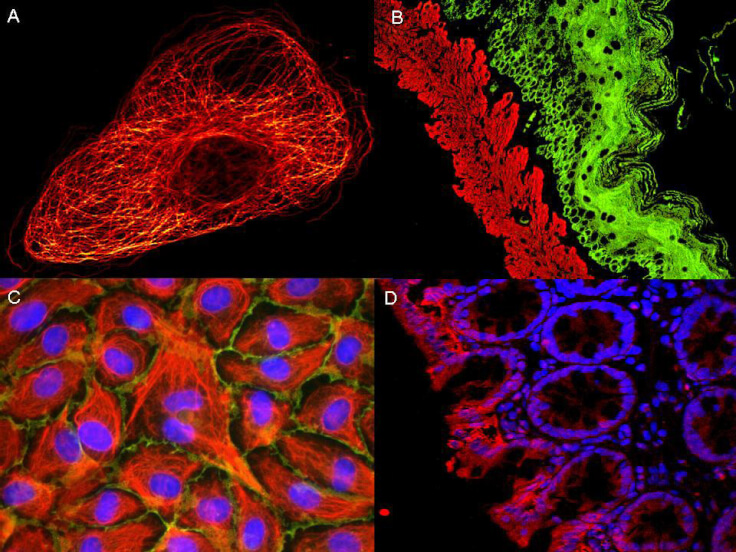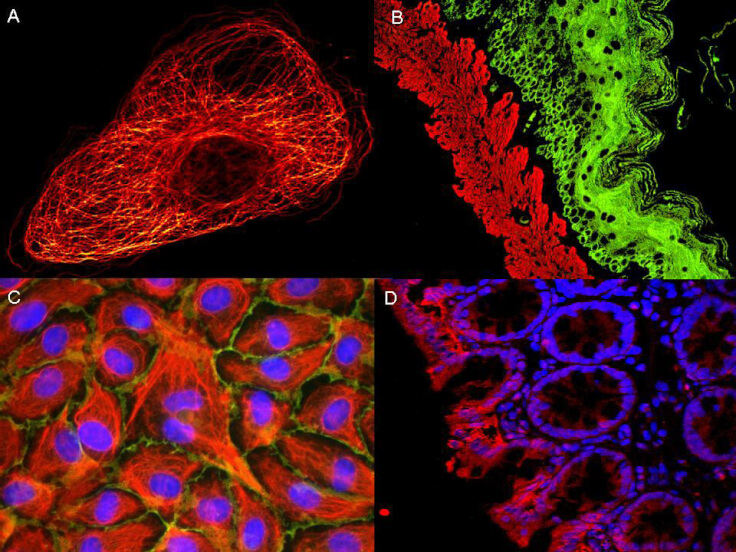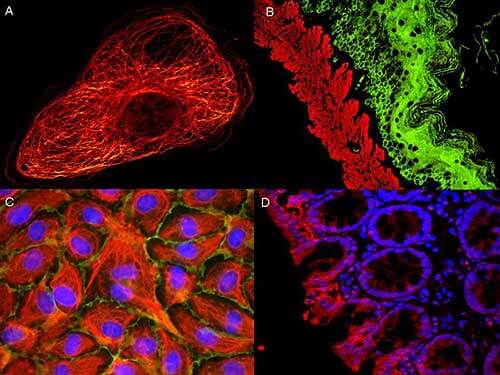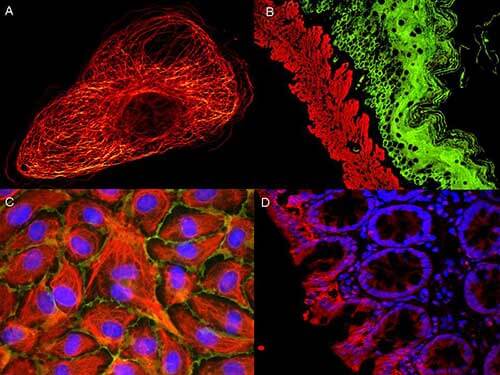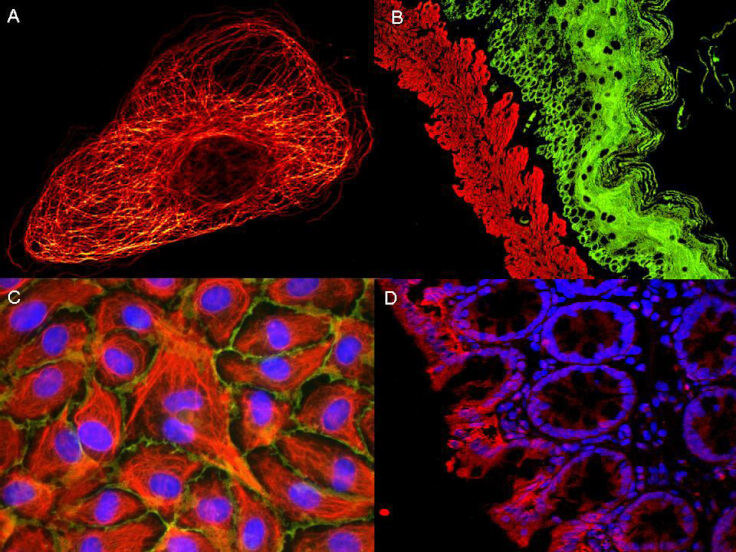Guinea Pig IgM (Fc specific) goat polyclonal antibody, Biotin
| Applications | In immunocytochemical and immunohistochemical use for the detection of IgM at the cellular and subcellular level by staining of appropriately treated cell and tissue substrates; to demonstrate circulating IgM antibodies in serodiagnostic microbiology and autoimmune diseases; to identify a specific antigen using an reference antibody of goat origin known to be of the IgM isotype in the middle layer of the indirect test procedure; in non-isotopic assay methodology (e.g. ELISA) to measure IgM in guinea pig serum or other body fluids. As a second step an avidin or streptavidin conjugate of the user’s choice has to be used. This immunoconjugate is not pre-diluted. The optimum working dilution of each conjugate should be established by titration before being used. Excess labelled antibody must be avoided because it may cause high unspecific background staining and interfere with the specific signal. Working dilutions: Histochemical and Cytochemical: 1/100 - 1/250. ELISA and comparable non-precipitating antibody-binding assays: 1/1000 - 1/5000. |
| Reactivities | Guinea Pig |
| Conjugation | Biotin |


 United States
United States
 Germany
Germany
 Japan
Japan
 United Kingdom
United Kingdom
 China
China
